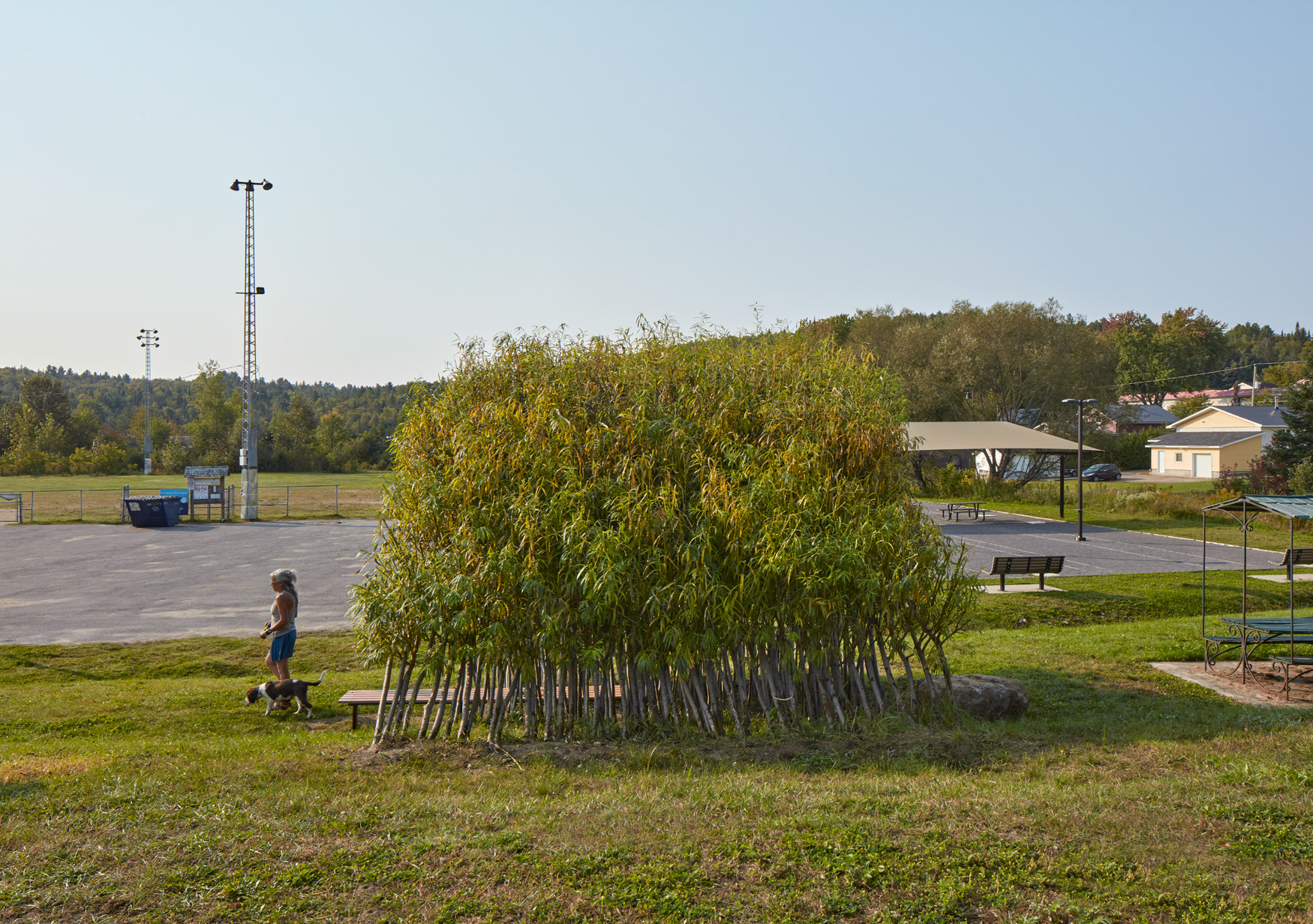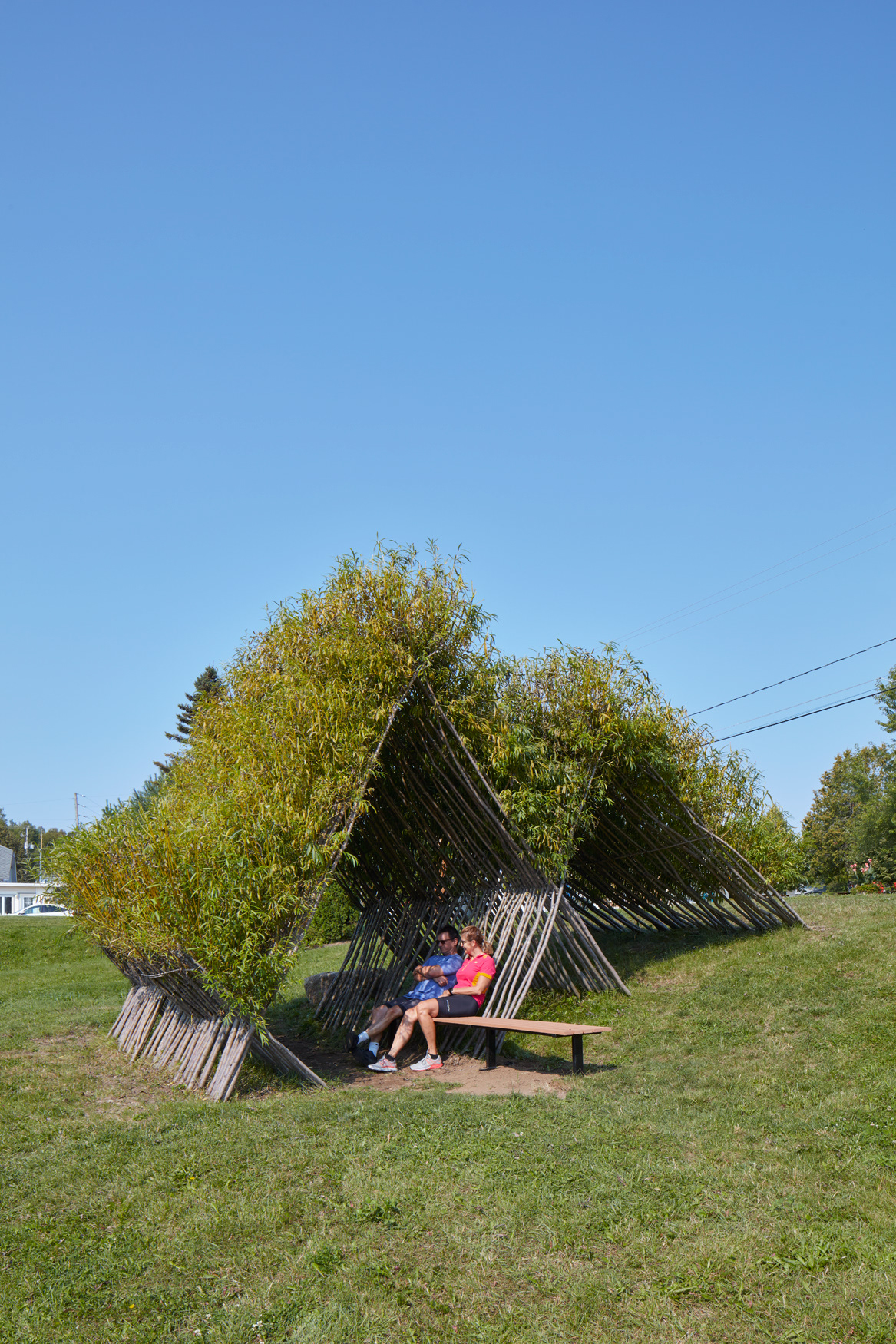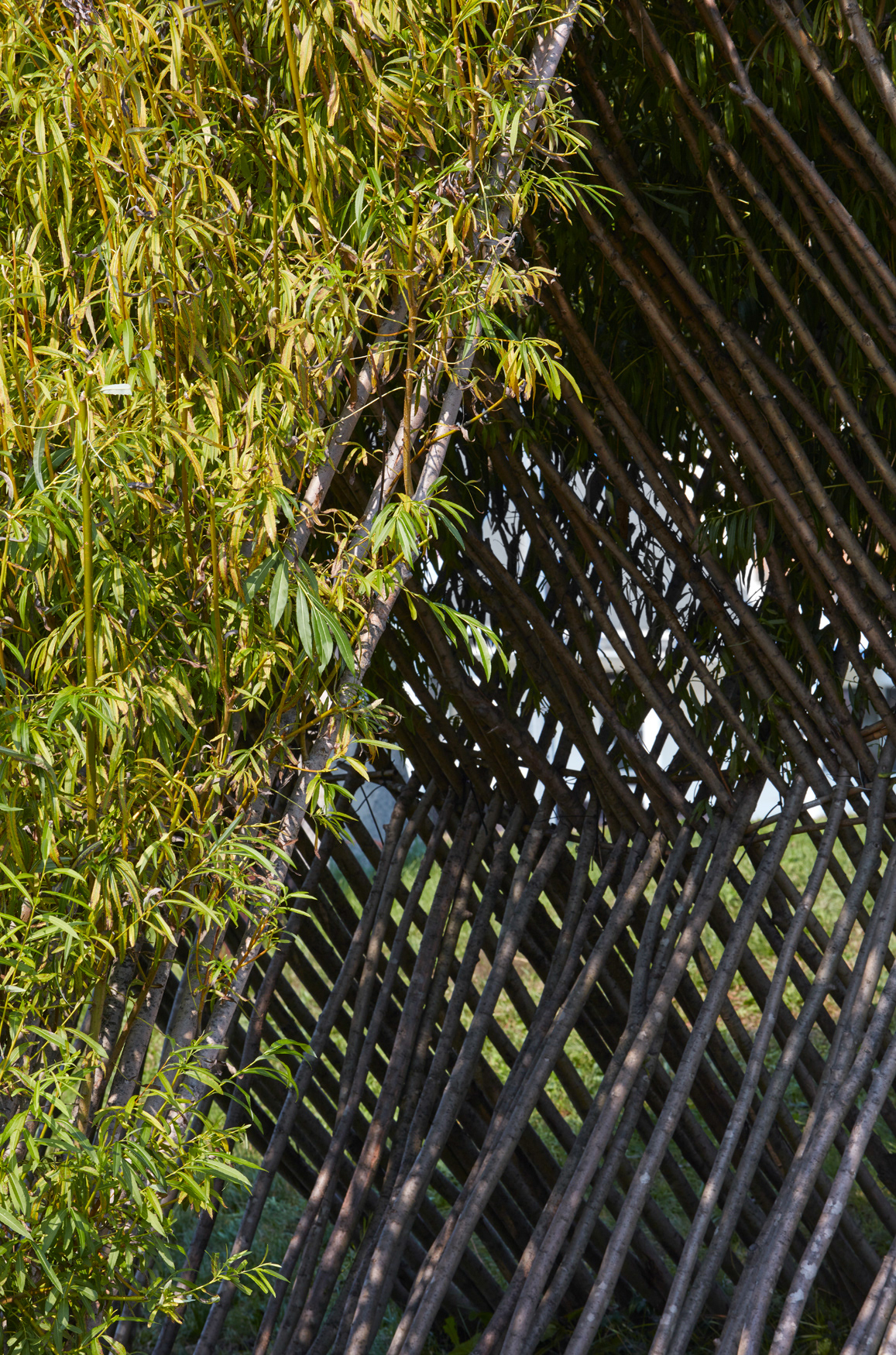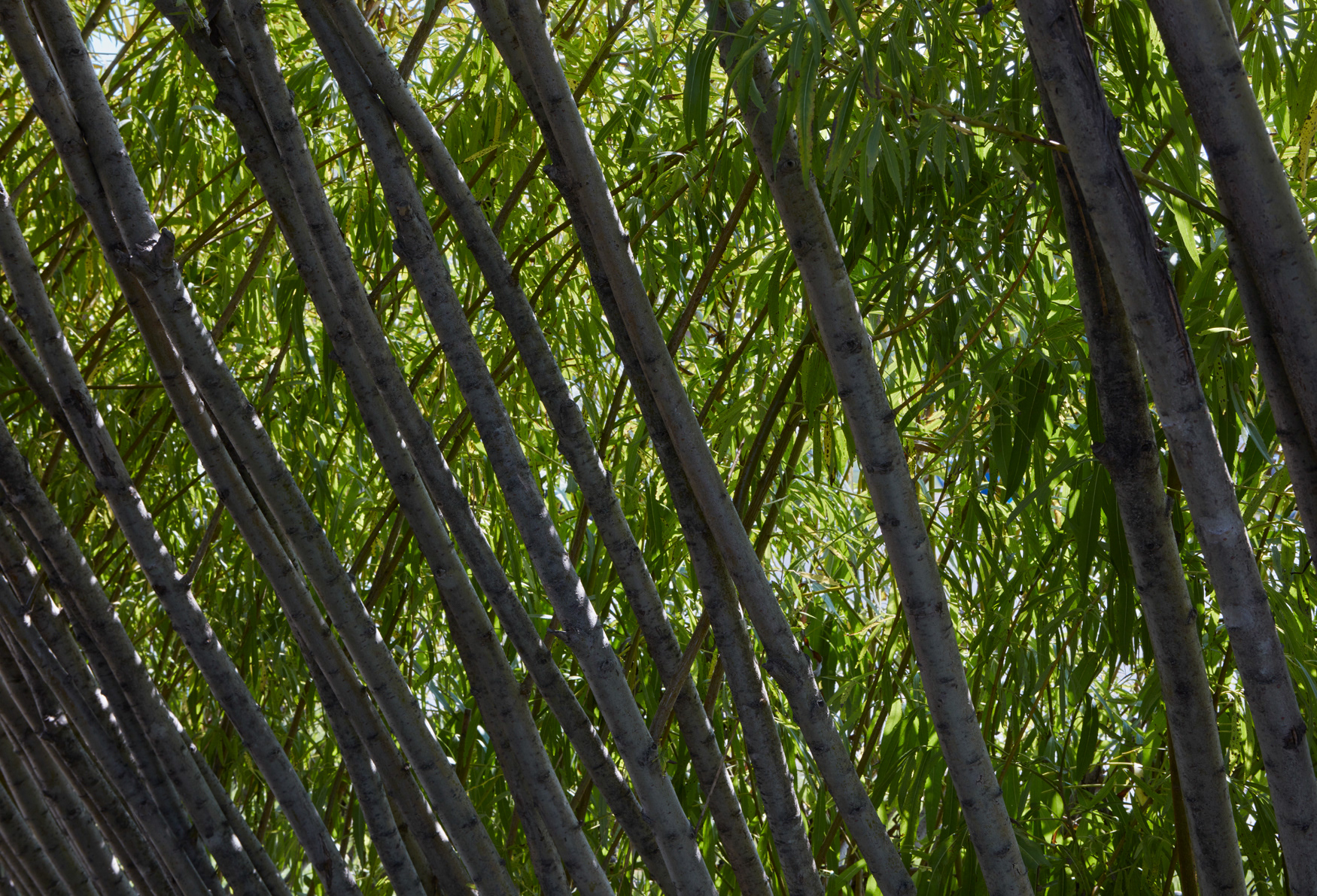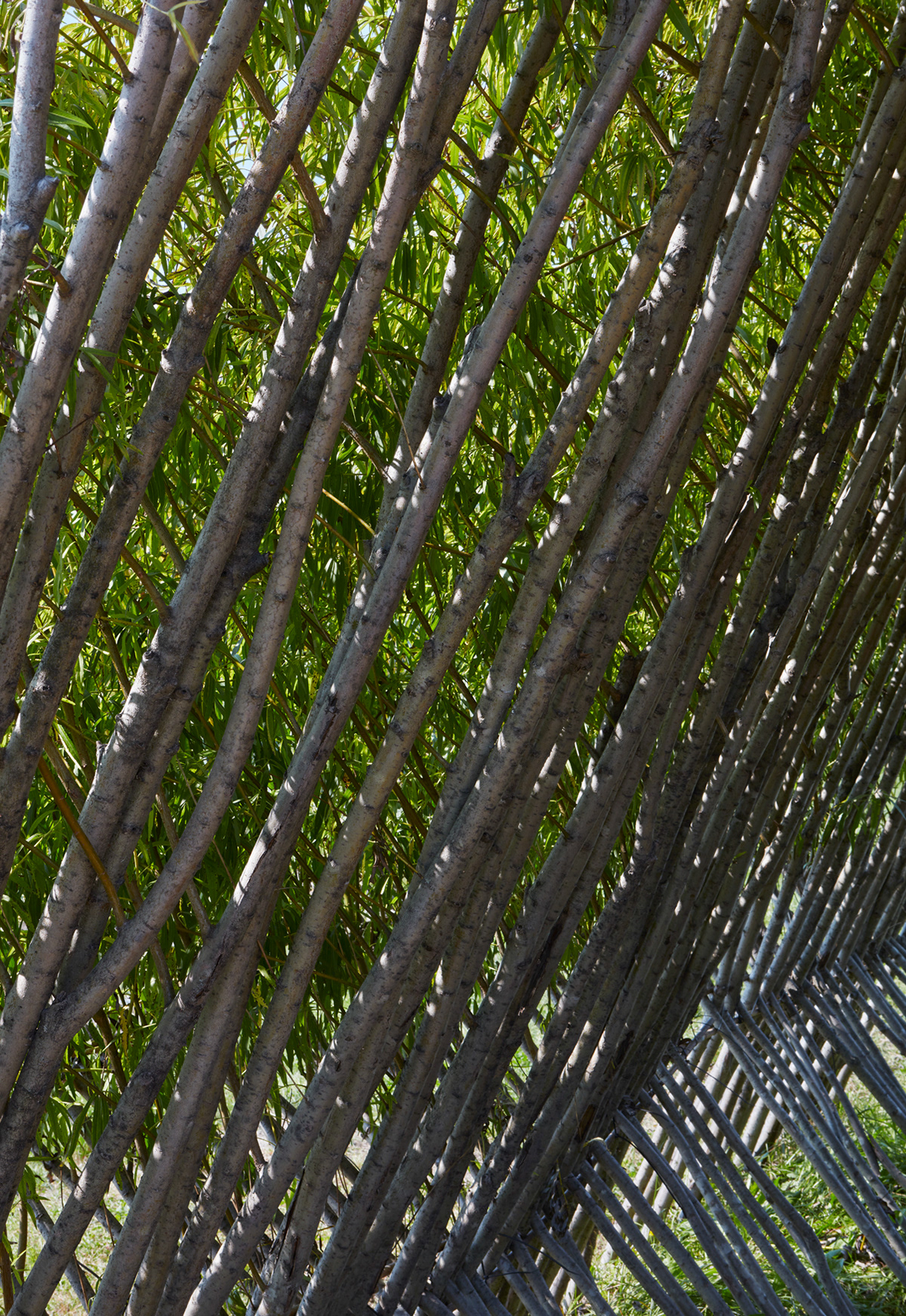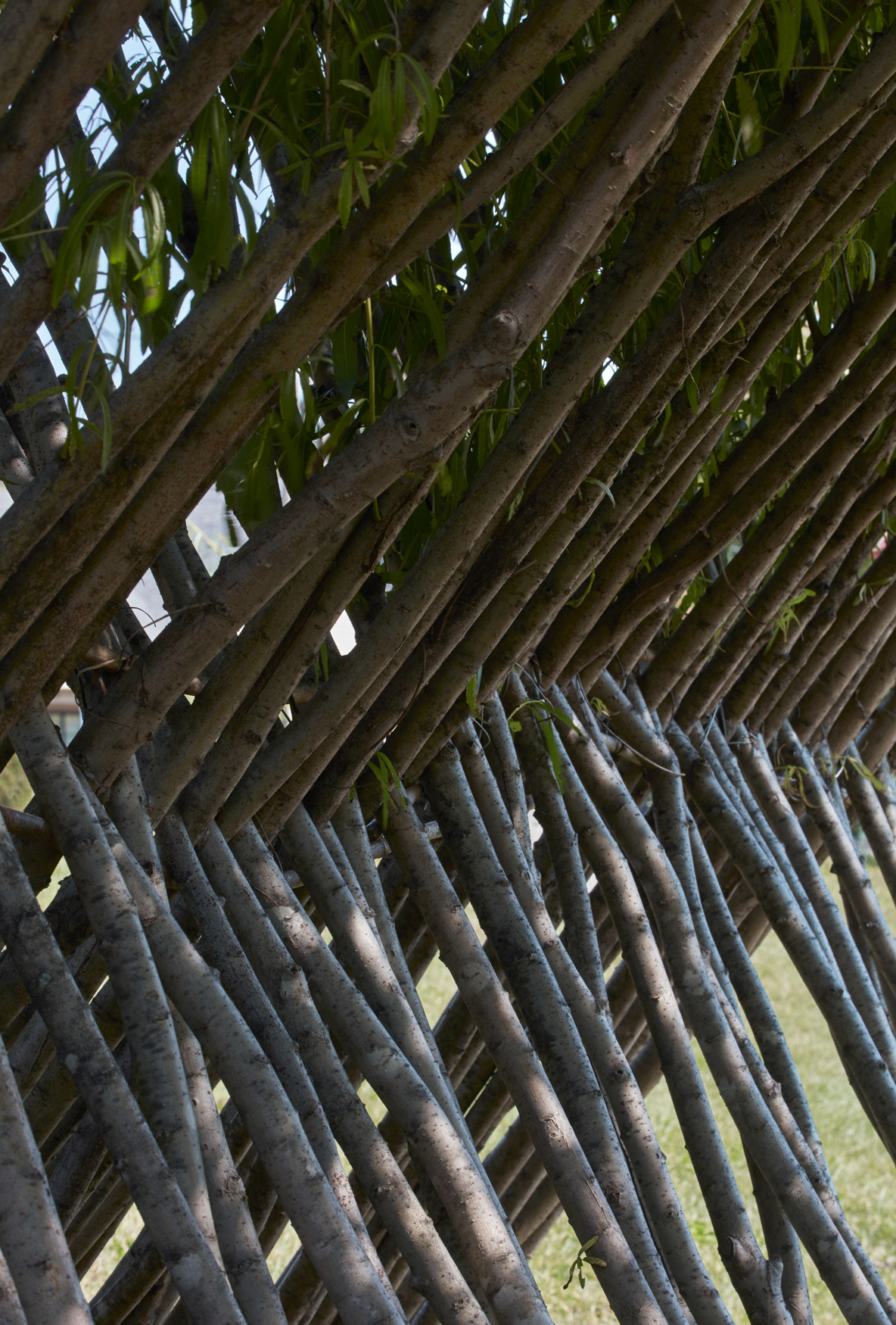Faire pousser une architecture vivante
Projet de recherche architecturale de prototypes expérimentaux pour une installation d’architecture vivante
Lauréat : Responsible Disruptors Award (Metropolis Magazine) / American MasterPrize — Landscape Architecture, Installations & structures / Grand Prix du Design — Lauréat Or (Hors-catégorie en architecture) / Grand Prix du Design — Lauréat Or (Prix spéciaux, Architecture durable) / Grand Prix du Design — Lauréat Argent (Architecture de paysage sur le domaine public, Paysage & Territoires) / Grand Prix du Design — Lauréat Platine (Prix spéciaux / Paysage + Nouveaux matériaux)
BOURSE : bourse du programme de partenariat territorial de Lanaudière et du Conseil des arts et des lettres du Québec
Growing Living Architecture
Architectural research project of experimental prototypes for a living architecture installation
winner : Responsible Disruptors Award (Metropolis Magazine) / American MasterPrize — Landscape Architecture, Installations & structures / Grand Prix du Design — Gold Laureate (Other Architecture Category) / Grand Prix du Design — Gold Winner (Special Awards, Sustainable Architecture) / Grand Prix du Design — Silver Winner (Public Landscape Architecture, Landscape & Territories) / Grand Prix du Design — Platinum Winner (Special Awards / Landscape + New Materials)
grant : bourse du programme de partenariat territorial de Lanaudière et du Conseil des arts et des lettres du Québec
Les êtres humains ont toujours été inspirés par la nature. Ce réflexe est particulièrement évident en architecture, où l'on a constamment intégré des formes, des motifs, des principes structurels ou organisationnels inspirés de phénomènes naturels.
Ces dernières années, de nombreuses études scientifiques ont confirmé l'intuition de sa contribution vitale à notre bien-être physique et psychologique.
Ces dernières années, de nombreuses études scientifiques ont confirmé l'intuition de sa contribution vitale à notre bien-être physique et psychologique.
De nombreuses relations symbiotiques avec des plantes vivantes ont été développées sans mettre en danger leur survie. Par exemple :
- en se nourrissant de fruits ou d'autres parties non vitales ;
- en tissant des ponts de racines ;
- en formant des clôtures vivantes (hedgelaying) ;
- en enlevant des parties d'arbres sans les tuer.
- en se nourrissant de fruits ou d'autres parties non vitales ;
- en tissant des ponts de racines ;
- en formant des clôtures vivantes (hedgelaying) ;
- en enlevant des parties d'arbres sans les tuer.
Description du projet ― Concevoir, planter et faire pousser un objet architectural en saule dans l'espace public du village de Saint-Alphonse-Rodriguez.
Le projet, réalisé avec la collaboration de la municipalité et d'un producteur local de saule, a été rendu possible grâce à une subvention du Conseil des arts et des lettres du Québec et des municipalités régionales de comté de Lanaudière (MRC de Lanaudière).
Cette structure civique s'inscrit dans une recherche appliquée sur l'architecture végétale vivante et ses possibilités environnementales, formelles, spatiales, bioclimatiques, artistiques et fonctionnelles. En valorisant l'écosystème naturel et communautaire, l'installation s'inscrit dans les expériences actuelles de design régénératif.
Le projet, réalisé avec la collaboration de la municipalité et d'un producteur local de saule, a été rendu possible grâce à une subvention du Conseil des arts et des lettres du Québec et des municipalités régionales de comté de Lanaudière (MRC de Lanaudière).
Cette structure civique s'inscrit dans une recherche appliquée sur l'architecture végétale vivante et ses possibilités environnementales, formelles, spatiales, bioclimatiques, artistiques et fonctionnelles. En valorisant l'écosystème naturel et communautaire, l'installation s'inscrit dans les expériences actuelles de design régénératif.
Le projet sert à marquer, mettre en valeur et définir le centre du village ainsi qu'à fournir une protection contre les éléments (soleil, vent, pluie). L'installation terminée sert d'élément de signalisation sculptural, d'abri et de lieu de rassemblement communautaire.
En utilisant un matériau naturel qui évolue au fil des saisons, la construction est à la fois singulière et familière. Les ambiances lumineuses, les odeurs, le mouvement des feuilles, créent un univers multi-sensoriel.
En utilisant un matériau naturel qui évolue au fil des saisons, la construction est à la fois singulière et familière. Les ambiances lumineuses, les odeurs, le mouvement des feuilles, créent un univers multi-sensoriel.
Human beings have always been inspired by nature. This reflex is particularly evident in architecture, where forms, patterns, structural or organizational principles inspired by natural phenomena have been constantly incorporated.
In recent years, numerous scientific studies have confirmed the intuition of its vital contribution to our physical and psychological well-being.
In recent years, numerous scientific studies have confirmed the intuition of its vital contribution to our physical and psychological well-being.
Many symbiotic relationships with living plants have been developed without endangering their survival. For example:
- feeding on fruits or other non-vital parts;
- by weaving root bridges;
- forming living fences (hedgelaying);
- removing parts of trees without killing them.
- feeding on fruits or other non-vital parts;
- by weaving root bridges;
- forming living fences (hedgelaying);
- removing parts of trees without killing them.
Project Description - To design, plant and grow an architectural object made of willow in the public space of the village of Saint-Alphonse-Rodriguez.
The project, carried out in collaboration with the municipality and a local willow producer, was made possible by a grant from the Conseil des arts et des lettres du Québec and the regional county municipalities of Lanaudière (MRC de Lanaudière).
This civic structure is part of an applied research on living plant architecture and its environmental, formal, spatial, bioclimatic, artistic and functional possibilities. By valuing the natural and community ecosystem, the installation is part of current experiments in regenerative design.
The project, carried out in collaboration with the municipality and a local willow producer, was made possible by a grant from the Conseil des arts et des lettres du Québec and the regional county municipalities of Lanaudière (MRC de Lanaudière).
This civic structure is part of an applied research on living plant architecture and its environmental, formal, spatial, bioclimatic, artistic and functional possibilities. By valuing the natural and community ecosystem, the installation is part of current experiments in regenerative design.
The project serves to mark, enhance and define the village center as well as provide protection from the elements (sun, wind, rain). The completed installation serves as a sculptural signage element, shelter and community gathering place.
By using a natural material that evolves with the seasons, the construction is both singular and familiar. The lighting ambiances, the smells, the movement of the leaves, create a multi-sensory universe.
By using a natural material that evolves with the seasons, the construction is both singular and familiar. The lighting ambiances, the smells, the movement of the leaves, create a multi-sensory universe.
Matériel ― Saule à croissance rapide.
Le saule est cultivé en plein champ par une entreprise locale pour la biomasse et la phytoremédiation.
Les branches, qui peuvent atteindre 7 mètres de long, sont récoltées dans le champ à l'automne et stockées congelées tout l'hiver. Au printemps, elles sont plantées dans le sol où elles prennent vie sous forme de boutures géantes.
Ces arbres nécessitent peu de soins et, en plus de leur capacité à lutter contre le changement climatique, ils créent des habitats pour la faune et la flore.
Le saule est cultivé en plein champ par une entreprise locale pour la biomasse et la phytoremédiation.
Les branches, qui peuvent atteindre 7 mètres de long, sont récoltées dans le champ à l'automne et stockées congelées tout l'hiver. Au printemps, elles sont plantées dans le sol où elles prennent vie sous forme de boutures géantes.
Ces arbres nécessitent peu de soins et, en plus de leur capacité à lutter contre le changement climatique, ils créent des habitats pour la faune et la flore.
Impacts ― Consolider le cœur du village de Saint Alphonse Rodriguez.
- Le projet occupe un espace sous-utilisé en face de la bibliothèque et fait partie d'une nouvelle liaison piétonne proposée entre la place et les terrains de sport. Le projet s'achèvera au printemps 2022 avec l'aménagement de la liaison piétonne et l'installation du mobilier urbain.
- Créer un lieu de rencontre pour la vie quotidienne et les événements spéciaux dans le village.
- Un groupe de bénévoles a été constitué pour aider à la mise en place et à l'entretien de la structure.
- Développer le potentiel de la bio-architecture comme alternative à certaines constructions et démontrer son impact positif sur les environnements dans lesquels elle s'insère. Ce projet est un premier pas, un prototype, ouvrant la voie à des projets de plus grande envergure.
- Démontrer que les quartiers et les espaces publics qui contribuent à la vie communautaire et au sentiment d'appartenance peuvent également être développés en dehors des centres urbains.
- Le projet occupe un espace sous-utilisé en face de la bibliothèque et fait partie d'une nouvelle liaison piétonne proposée entre la place et les terrains de sport. Le projet s'achèvera au printemps 2022 avec l'aménagement de la liaison piétonne et l'installation du mobilier urbain.
- Créer un lieu de rencontre pour la vie quotidienne et les événements spéciaux dans le village.
- Un groupe de bénévoles a été constitué pour aider à la mise en place et à l'entretien de la structure.
- Développer le potentiel de la bio-architecture comme alternative à certaines constructions et démontrer son impact positif sur les environnements dans lesquels elle s'insère. Ce projet est un premier pas, un prototype, ouvrant la voie à des projets de plus grande envergure.
- Démontrer que les quartiers et les espaces publics qui contribuent à la vie communautaire et au sentiment d'appartenance peuvent également être développés en dehors des centres urbains.
Material ― Fast growing willow.
Willow is grown in the field by a local company for biomass and phytoremediation.
The branches, which can grow up to 7 meters long, are harvested from the field in the fall and stored frozen all winter. In the spring, they are planted in the ground where they come to life as giant cuttings.
These trees require little care and, in addition to their ability to combat climate change, they create habitat for wildlife.
Willow is grown in the field by a local company for biomass and phytoremediation.
The branches, which can grow up to 7 meters long, are harvested from the field in the fall and stored frozen all winter. In the spring, they are planted in the ground where they come to life as giant cuttings.
These trees require little care and, in addition to their ability to combat climate change, they create habitat for wildlife.
Impacts ― Strengthen the heart of the village of Saint Alphonsus Rodriguez.
- The project occupies an underutilized space in front of the library and is part of a proposed new pedestrian connection between the plaza and the athletic fields. The project will be completed in the spring of 2022 with the development of the pedestrian connection and installation of street furniture.
- Create a meeting place for daily life and special events in the village.
- A group of volunteers has been formed to assist with the set up and maintenance of the structure.
- To develop the potential of bio-architecture as an alternative to certain constructions and to demonstrate its positive impact on the environments in which it is inserted. This project is a first step, a prototype, paving the way for larger projects.
- Demonstrate that neighborhoods and public spaces that contribute to community life and a sense of belonging can also be developed outside of urban centers.
- The project occupies an underutilized space in front of the library and is part of a proposed new pedestrian connection between the plaza and the athletic fields. The project will be completed in the spring of 2022 with the development of the pedestrian connection and installation of street furniture.
- Create a meeting place for daily life and special events in the village.
- A group of volunteers has been formed to assist with the set up and maintenance of the structure.
- To develop the potential of bio-architecture as an alternative to certain constructions and to demonstrate its positive impact on the environments in which it is inserted. This project is a first step, a prototype, paving the way for larger projects.
- Demonstrate that neighborhoods and public spaces that contribute to community life and a sense of belonging can also be developed outside of urban centers.
en collaboration avec : Municipalité St-Alphonse-Rodriguez, Ramo, comité de bénévoles
programme : recherche architecturale
photos : James Brittain Photography
programme : recherche architecturale
photos : James Brittain Photography
Ce projet a été rendu possible grâce à une bourse du programme de partenariat territorial de Lanaudière et du Conseil des arts et des lettres du Québec.
Récipiendaire d'un prix Disruptors In Architecture 2023 (Metropolis Magazine), qui met de l'avant les projets d'architecture et de technologie qui représentent une avancée dans des domaines tels que la durabilité, la santé et l'équité.
in collaboration with : Municipality of St-Alphonse-Rodriguez, Ramo, volunteer committee
program: architectural research
photos : James Brittain Photography
program: architectural research
photos : James Brittain Photography
This project was made possible by a grant from the Lanaudière territorial partnership program and the Conseil des arts et des lettres du Québec.
Recipient of a Disruptors In Architecture 2023 award (Metropolis Magazine), which highlights architecture and technology projects that represent an advance in areas such as sustainability, health and equity.


